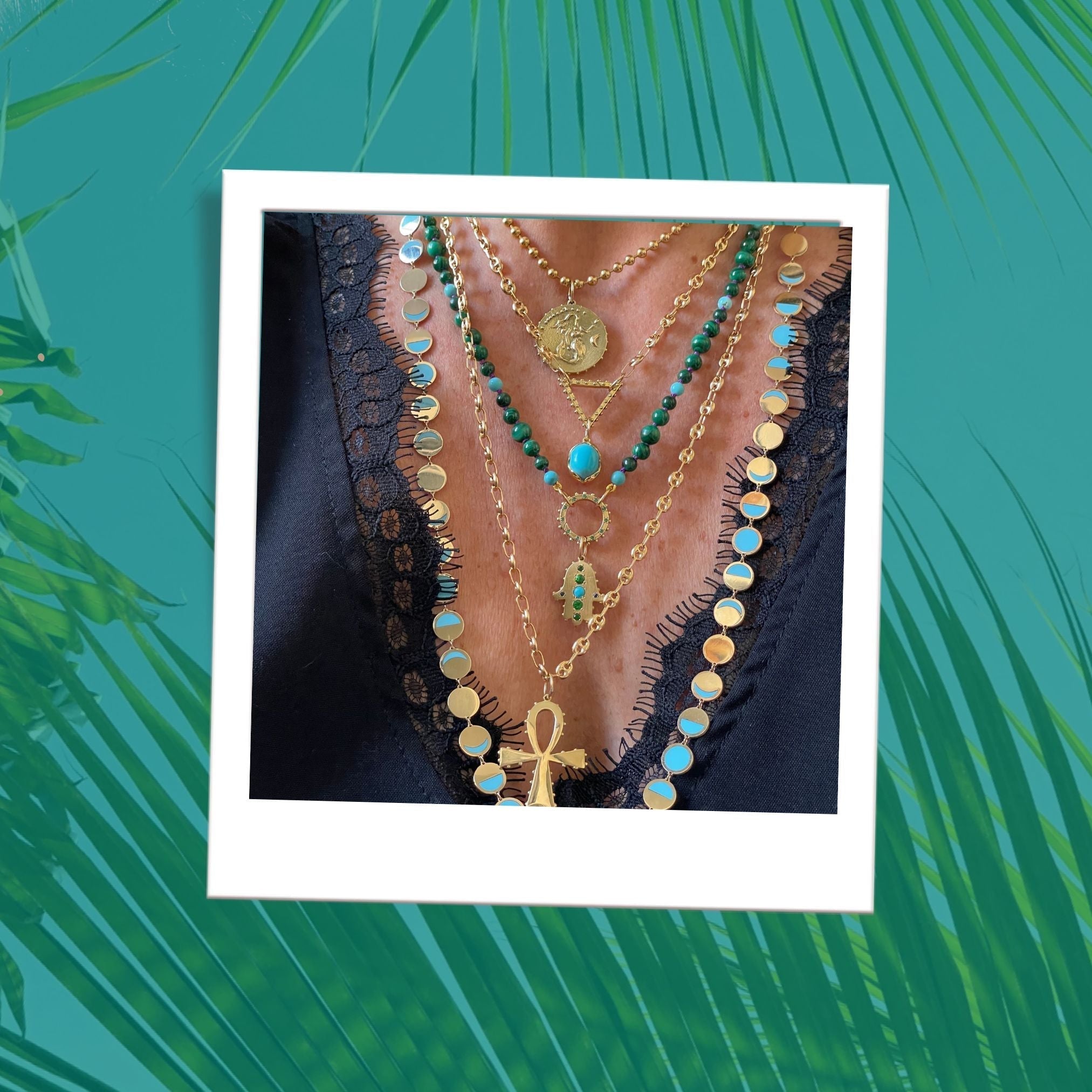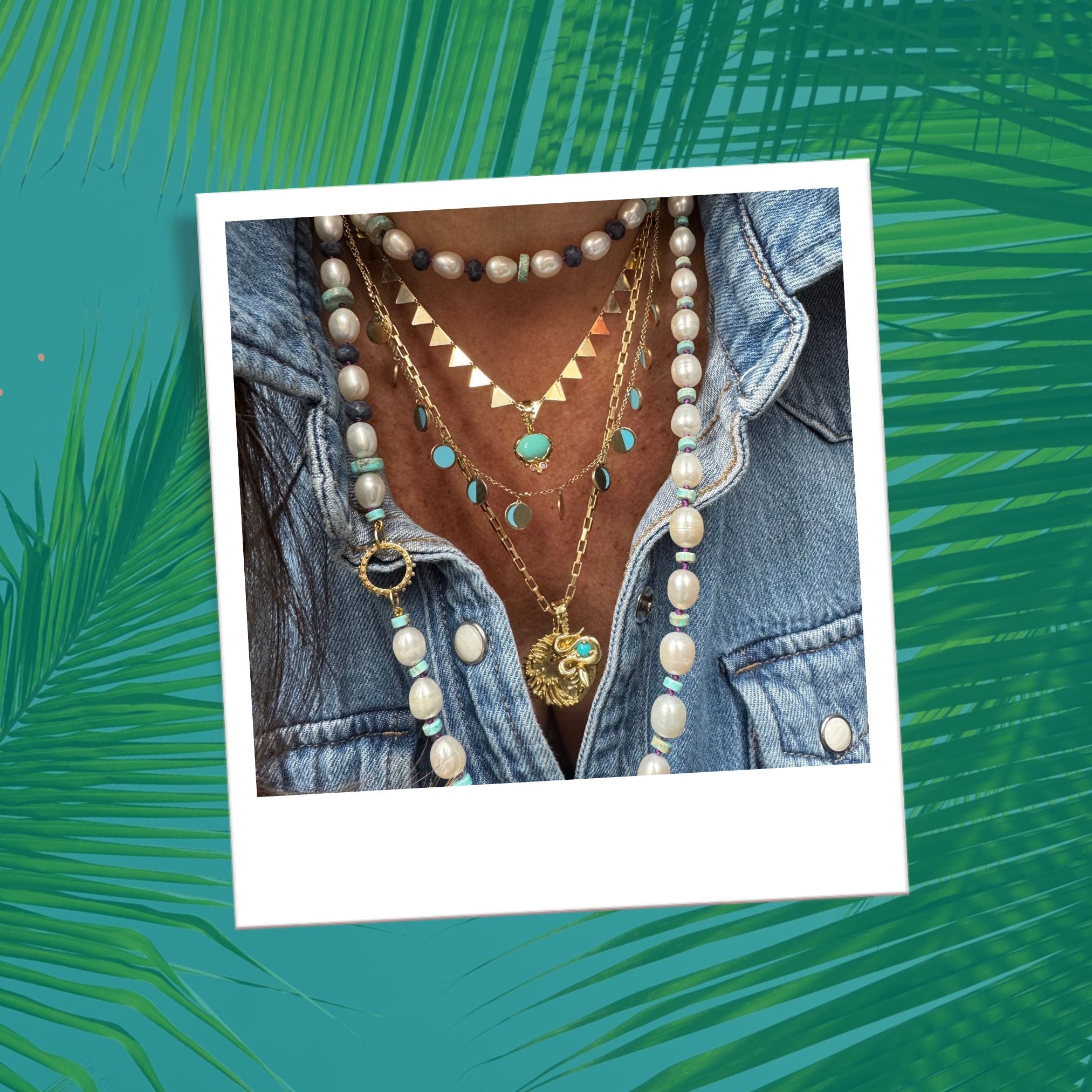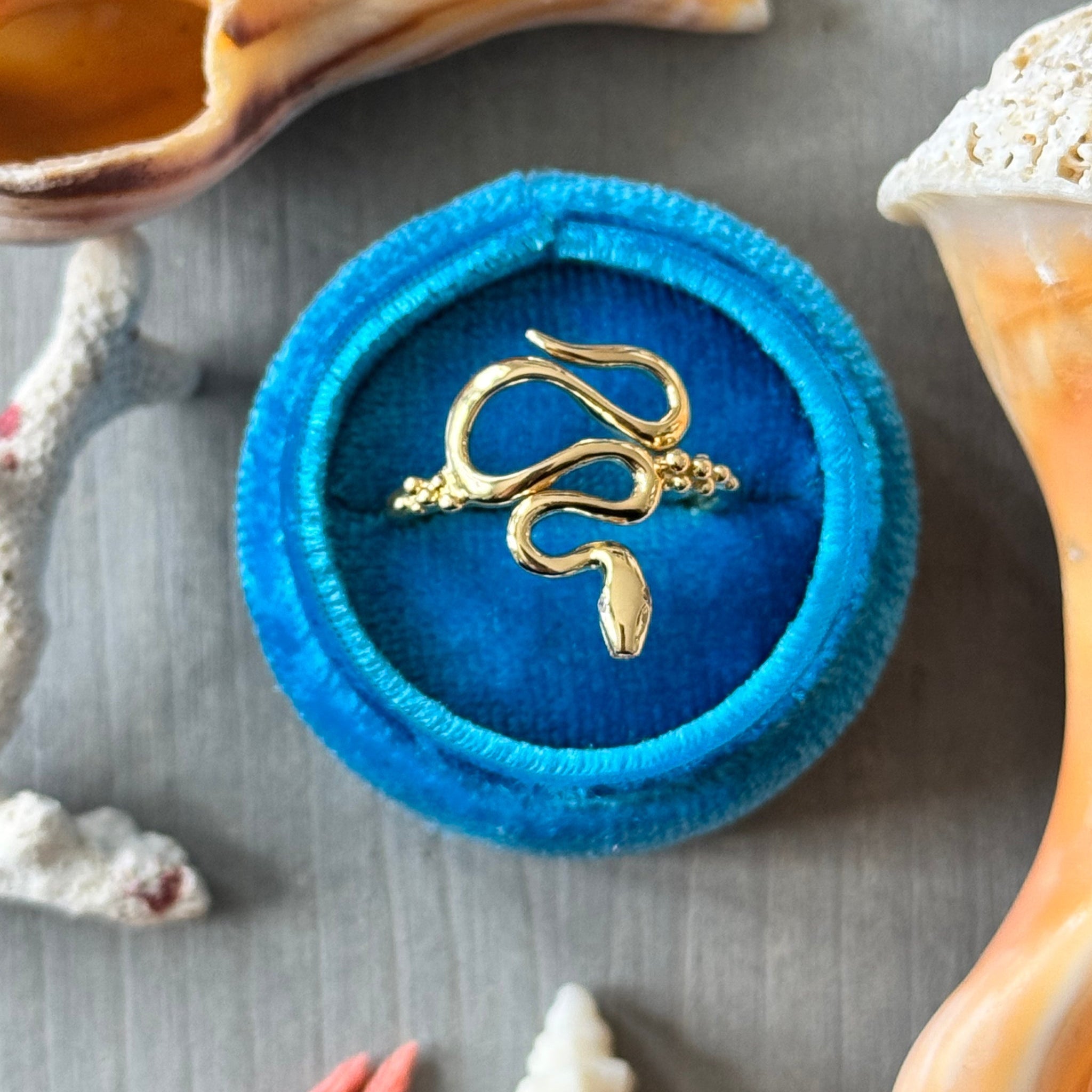
Gold at $3,300: What It Means for You, Jewelry, Investing, and Meaningful Luxury
Editor’s Note (September 21, 2025)
When I first shared these reflections, gold was holding at $3,300 an ounce, hence the title above. In just six months, it has surged nearly 40%, now approaching $3,800. This rise only deepens the truths I explore in the post: gold’s role as both a financial anchor in uncertain times and a tangible and precious vessel for meaning when transformed into jewels.
The original post begins below.
Gold is having a moment—and not just on fingers, wrists, or necks.
As of mid-2025, the price of gold has surged past $3,300 per ounce, marking yet another historic high. Whether you’re a collector, a conscious investor, or someone with a few unloved heirlooms tucked away, the value of gold today demands attention.
With an MBA in finance, two decades behind the jeweler’s bench, and a deep commitment to sustainability, I like to think I bring a unique blend of perspectives on this. I understand how gold is priced, how it’s traded—and how it’s worn. I see its value through multiple lenses. Gold is emotional. Gold is eternal. Gold is also a financial asset. And right now, it’s one of the most fascinating intersections of beauty, value, and meaning you can hold in your hand.
“The price of gold may be set in London, but the meaning you give it is entirely your own.”
Let’s explore what this all means for you.
Why Now? Gold vs. the S&P 500
Gold has historically outperformed the stock market during periods of volatility and long-term stagnation. Since 1999, cumulative gold returns have exceeded 860%, while the S&P 500 (excluding dividends) has returned about 390%. With dividends reinvested, the S&P 500’s real return since 1999 jumps from 390% to around 590%.
That’s powerful—but gold still holds its own, nearly doubling the price-only return. While the stock market offers compounding growth through reinvestment, gold’s power lies in its physicality, permanence, and role as a crisis hedge—especially during periods of uncertainty like the one we’re living through. In 2025 alone, gold is up about 25% year-to-date—and over 40% in a year, a surge driven by global instability, dollar weakness, speculative demand, and central banks increasing their reserves.
Gold isn’t just a hedge against inflation or political chaos. It’s a tangible store of value—recognized across time and cultures. Unlike stocks, crypto, or real estate, it’s portable. It can be worn. And even when markets dip, it retains something incredibly rare: a functional floor.
That’s because solid gold always carries melt value. It can be sold or reshaped, even if prices fall. Of course, melting comes with caveats—labor, refining costs, metal loss, and lower resale prices. But the asset doesn’t vanish—it transforms.
“Gold is a good investment. A jewel made with intention? That’s priceless.”
How Gold Is Priced—and Why Jewelers Feel It Differently
The pricing system actually inflates gold price. Twice a day, the London Bullion Market Association (LBMA) sets the global benchmark price for gold, a process known in the trade as the London fix. But that “fix” isn’t based on physical gold—it comes from paper contracts and large unallocated trading positions. It’s a world of speculation, not substance.
That speculative activity, along with central bank buying, pushes up prices for physical gold—creating pressure on those of us who use gold in its truest, most tangible form.
“While fortunes are traded in financial instruments, it’s becoming harder for independent jewelers to access raw materials affordably.”
For those of us working with solid gold—not financial abstractions—the effects are real. Speculation in the global markets drives up the cost of raw materials, making it more expensive for independent jewelers to source gold responsibly and transparently. Unlike large luxury houses that can hedge or buy in bulk, I purchase gold in small, transparent lots—often at the highest possible cost—because I refuse to cut ethical corners. Every ounce in my Manhattan studio is sourced with intention, carved by hand, and cast into something meaningful.
Gold is a Conduit for Energy—and Meaning
Gold is more than a material—it’s a channel. Scientifically, gold is one of the most conductive metals on earth. It transmits electricity with exceptional efficiency, which is why it’s used in aerospace, medical devices, and technology.
But on a symbolic level, that conductivity makes gold a powerful metaphor: a conduit not just of energy, but of intention. That’s why so many ancient cultures revered gold as sacred. In my own practice, I see and use it as a way to carry energy—of love, protection, courage, remembrance—through objects we wear close. Solid gold talismans are tangible prayers and spells, a way for us to wear our stories, hopes and dreams.
Explore the symbolism behind gold and my favorite talismans here »
What This Means for You as a Collector and Jewelry Lover
Yes, prices are high. But that’s not a reason to step away from gold. In fact, it’s an invitation to lean in with more intention.
If you already own gold jewelry, consider it part of your portfolio. Its value has likely increased significantly—and unlike stocks, you can wear it while it appreciates. If you’ve inherited gold pieces that don’t match your style, now is a powerful time to transform them into something meaningful.
The Emotional and Financial Floor
Gold is one of the few assets with a “floor.” Even if a piece goes out of style or breaks, its raw material retains value. It can be melted, sold, or recast. This isn’t true of most consumer goods. Gold jewelry offers both sentimental and financial security—and when crafted with intention, it becomes something even more valuable: a vessel for meaning.
That said, nothing is guaranteed. If prices fall in the future, you may not recoup the exact investment you made today. Melting gold involves time, labor, and cost. But as with all investments, it’s about alignment with your values. And if you believe in the lasting power of tangible beauty, gold delivers.
“Gold is both asset and talisman. It holds emotion and equity. That’s rare.”
Melt, or Transform and Breathe New Life?
With gold at historic highs, it’s tempting to liquidate old jewelry. But here’s the truth: melting gold involves refining fees, metal loss, and time. You’ll rarely receive full market value unless you’re a wholesaler. And once melted, the story is gone.
And yet—what if the better option isn’t to cash out, but to create? I help clients do just that. We take your broken chains, orphan earrings, unworn jewels, or outdated settings to melt them down or scrap them for gold credits to co-create new heirlooms. Pieces that reflect who you are now, while honoring the stories that came before. It’s sustainable. It’s soulful. And with gold at these levels, it’s also smart.
“At today’s price, unworn gold isn’t just clutter—it’s potential waiting to be shaped. You can scrap it for cash—or you can turn it into a treasure.”
Over the years, I’ve transformed countless heirlooms, broken jewels, and inherited pieces into powerful new talismans. A necklace that no longer suits your style becomes a ring. A wedding band from another chapter becomes a protective charm. Yes, if you'd like, I can also cleanse a stone of its energy and reset it anew.
And if melting or selling truly is the best path for you? I’ll tell you honestly. I’ll even help you navigate it. But most of the time, there’s something more meaningful we can do together.
Looking to create something new from the gold you already own?
Start your custom project here

Jewelry Is a Tangible Investment—in Every Sense
We often think of investment as something abstract: stocks, bonds, digits on a screen. But the most enduring forms of wealth are tangible. Fine gold jewelry is one of them.
It’s wearable wealth. It carries melt value. It crosses borders. It gets passed down. And when crafted with intention, it becomes something even more powerful: a piece of your story, designed to outlast trends and generations.
Financial returns on gold investments are clear. But the emotional return? That’s even more compelling.
So—Buy Now, or Wait?
There’s no perfect time to enter any market. But if you’ve been waiting to commission a meaningful piece, or to transform something sitting unworn in your jewelry box—don’t wait too long.
Gold prices are high, and likely to stay there. Demand is growing. If you’re waiting for prices to come down—you may be waiting a long time. As economic pressures continue and supply constraints persist, many analysts believe gold’s floor has risen. And with gold being a non-renewable resource, that upward pressure may not let up. I’ll always do my best to honor your budget—but what we create together now may be more accessible today than six months from now.
But don’t buy gold out of fear. Buy it because you believe in beauty. Because you want to honor a memory, celebrate a milestone, or carry protection with you every day. Buy it because it makes you feel powerful—and because you know its value, both tangible and symbolic, will last.
Looking for Gold You Can Wear Now?
Each ready-to-ship jewel in my collection is crafted in solid gold with care, symbolism, and timeless design. They're pieces you can wear right away—but treasure forever.
Explore ready-to-ship pieces
Final Thoughts
Gold isn’t just a commodity. It’s a mirror reflecting what we value most.
For me, it reflects trust. Craft. Transparency. Legacy. It’s the raw material I shape not just with tools, but with meaning. As a designer, a sustainability advocate, and a finance professional, I believe jewelry can be both a personal talisman and a wise investment.
In my studio, I work with both recycled and Fairmined gold—always chosen with care, always carved with intention. And I believe this also adds value to your investment.
Looking to purchase something new, transform what you already have, or simply seeking clarity—I’m here. To advise. To create. To make it meaningful.
With gratitude,
Delphine

Sources & Data Explained
- Gold Performance (1999–2024): World Gold Council: USD288/oz to USD2,756/oz (866% gain)
- S&P 500 Price Return (1999–2024): Macrotrends data: USD1,228 to USD6,001 (389% gain)
- S&P 500 Total Return (1999–2024): ~664% including dividends (approx. 8% annualized)
- Inflation-Adjusted Annual Returns: Gold ~6.8%, S&P 500 ~5.3–5.4%
- Gold Price YTD (2025): World Gold Council: near USD3,300/oz—up ~40% YTD





